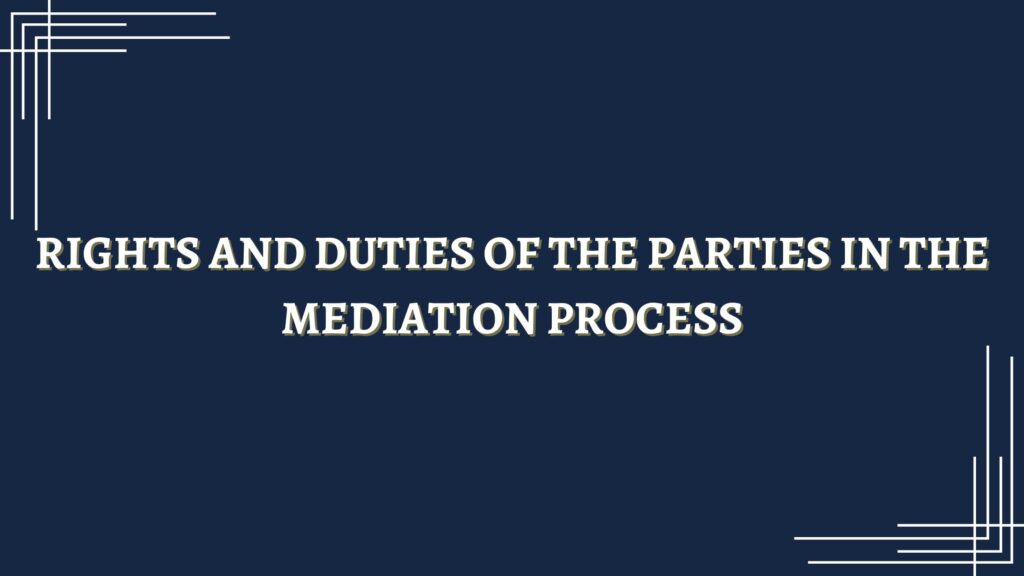Cross-Border Mediation in India: A Look Ahead
[By Aarushi Lunia] The author is a second-year B.A. LL.B. (Hons.) student at West Bengal National University of Juridical Sciences (NUJS), Kolkata. Introduction “…mediation is no longer an option; it is a necessity…” U.N. Secretary-General António Guterres (2018) Maintaining global peace is essential for resolving high-tension situations through harmony, and collaboration, the values shared by mediation. Mediation ensures security and helps address the rise in commercial disputes driven by growing global trade. As a developing nation, India’s significant trade and economic growth has led to a higher likelihood of disputes, even over minor issues. This underscores the need for effective mechanisms to resolve conflicts. Presently, the Indian judiciary system has 44,551,924 cases pending. This highlights the system’s flaws, and given the potential for high tensions in cross-border disputes, mediation stands out as a fair solution.[i] Mediation refers to a method of resolving conflicts wherein two or more parties can reach a common ground with the help of a neutral third party. This third party is referred to as the mediator. A mediator is not a judge but is merely a facilitator to help parties reach an amicable solution.[ii] The Mediation Act of 2023 (hereinafter referred to as “the Act”) introduces certain uniformity and aims to promote mediation as a form of alternative dispute resolution mechanism in India. The Act is ineffective in regulating cross-border mediation in India, due to significant shortcomings that render decrees in such cases futile. This blog examines these issues, their challenges, and the prospects for cross-border conflict resolution. Current Infrastructure in India An effective dispute resolution process significantly impacts the economy, business practices, and access to justice while promoting ease of living for citizens.[iii] The current framework for governing mediation in India is primarily focused on domestic disputes. §89 of CPC, 1908 allows for out-of-court dispute resolution methods like arbitration, conciliation, Lok Adalat, and mediation. However, §89(2)(d) introduces vagueness by requiring them to refer disputes to mediation rather than allowing parties to approach the mediators directly. It burdens the courts and lacks clear procedures for such cases referred to mediation. The Arbitration and Conciliation Act,1996 is a regulation that also provides provisions for mediation. §8A and §8B mention the power of the court in certain instances to refer to mediation or conciliation. The shortcoming of these provisions is that even after a successful mediation, the referral court has the final say on the agreement’s validity. As a dispute resolution mechanism, this limits mediation’s autonomy, making it especially difficult to regulate cross-border disputes involving multiple countries.[iv] The Commercial Courts Act, 2015 is beacon of hope in this development. It has been put in place to encourage the parties to resolve disputes via mediation, before litigation, by mandating a pre-institution mediation for commercial disputes. The Hon’ble Supreme Court in the case of M/s Patil Automation Private Limited and Ors. v. Rakheja Engineers Private Ltd. also highlighted the importance of this provision by holding the commercial suit’s dismissal because of the failure to invoke pre-institutional mediation. Mediation centres and institutions have also been set up which provide mediation services in case of cross-border disputes. A few amongst them are the following: 1) The International Centre for Alternative Dispute Resolution (ICADR)– The objective of this institution is to promote ADR as a method of dispute resolution mechanism, as opposed to the traditional way of litigation. The centre recommends mediation and arbitrations as the best forms of settlement mechanisms. Being an autonomous organisation, established by the government of India, it promotes mediation for both domestic and international disputes. 2) Private mediation centres– Many private mediation centres such as Indian Institute of Arbitration & Mediation, SAMA and CAMP Arbitration and Mediation Practice offer their specialised service in the resolution of cross-border mediation disputes. By offering successful training programmes to become an international mediator, they have aided in increasing the infrastructural prospects for cross-mediation in India. While current institutions play a valuable role, they are inadequate to meet the growing demands of cross-border mediation in India. This is primarily due to the lack of legal recognition for agreements reached in these institutions across different jurisdictions. As a result, dissatisfied parties can challenge the enforceability of such agreements in court, causing mediation to be viewed as ineffective, time-consuming, and merely procedural. This undermines the credibility of these institutions and creates a procedural burden for cross-border parties. Moreover, limited public awareness and resistance from pro-litigation advocates to adopt alternative dispute resolution (ADR) mechanisms pose significant obstacles to establishing an effective and enforceable mediation system. A comprehensive legal framework is essential for effectively managing the complexities of international mediation and supporting India’s economic growth in a globalized world. Lack of harmony between The Singapore convention and The Mediation Act, 2023 While the Act seeks to promote and facilitate mediation, including for international commercial disputes, it falls short in providing mechanisms for the enforcement of settlement agreements arising from international mediations, conducted outside India, even when an Indian party is involved. This might not be perceived as being in line with internationally recognised frameworks such as the United Nations Convention on International Settlement Agreements Resulting from Mediation popularly known as the “Singapore Convention” to which India is a signatory member. The inconsistency between the statutes harms India’s global trade and cross-border dispute resolution. The convention aims to promote mediation as a preferred method for settling cross-border commercial disputes.[v] The convention’s effectiveness is evidenced by the 57 countries that have signed it and the 14 that have ratified it. The Singapore Convention provides a standardized framework for enforcing international commercial mediation agreements across signatory countries.[vi] It is the sole international framework offering standardized enforcement for commercial mediation agreements. This is a positive development that should be aligned with the Act. Concerning international mediation conducted within India, §3(g) of the Act, which pertains exclusively to mediation conducted within India, including international mediation, defines international mediation as involving at least one non-Indian participant. §27(2) of the Act permits mediated settlement agreements to be enforced as decrees
Cross-Border Mediation in India: A Look Ahead Read More »








